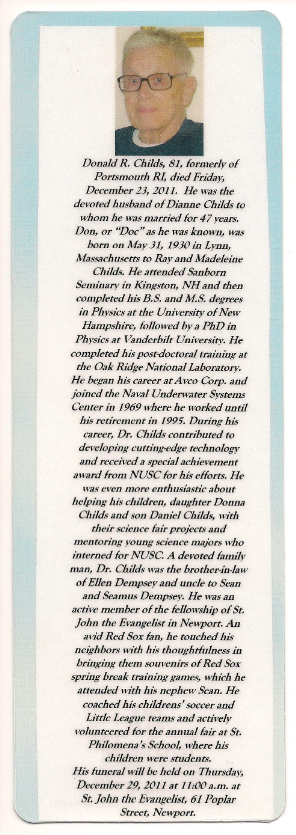As we celebrate Father’s Day today, I want to share again the words that had appeared in the “Acknowledgments” to the first edition of Prepare for the Worst, Plan for the Best: Disaster Preparedness and Recovery for Small Businesses:
“I hope that my dad, who is retired, will enjoy mentoring those students and sharing with them his enthusiasm for the natural sciences as he did with me! My dad never missed a parent-teacher’s meeting, never missed a science fair or spelling bee, sacrificed his Saturdays to coach my soccer and Little League teams, and offered every possible encouragement to me. I have fond memories of touring college campuses with my parents during my senior year of high school, as we imagined what my future would be. I wish every young woman could have such a wonderful dad to instill in her confidence and optimism.”
Two months before those words were published, my dad was admitted to the hospital for coronary bypass surgery. He looked so frail in the hospital bed, his large eyeglasses making his face and body appear small. I wondered if he had the strength, the stamina or the motivation to participate in cardiac rehab, which would be the next step after discharge from the hospital. Recovering from bypass surgery would be daunting for anyone, but my dad was attempting it after caring for my mother following her traumatic brain injury. He must have felt overwhelmed and I knew that there was something I needed to do.
Sheck Cho, my editor at Wiley, was able to get me a complimentary author’s copy of the book in advance of the official publication date. I brought it to the hospital where I read the “Acknowledgments” to my parents. They were absolutely stunned, as they had been unaware that I had a publishing contract with John Wiley & Sons Inc. or that I had written a manuscript. I had intended to surprise my dad with the book when it would be published in October 2002, but after seeing his fragile state, I didn’t want to delay two months for the book to be “official”. Tears formed in my dad’s eyes as he heard the words from the “Acknowledgments” and then he drifted off to sleep. I wondered if I had done the right thing, to provoke such emotion when he was weakened.
The next morning I returned to hear the buzz in the hospital: my dad was like a lion that had roared. Every physician, nurse and member of the hospital staff who had entered his room had to read the “Acknowledgments” to my book, as my dad proudly announced to anyone and everyone “my daughter wrote that!” Everyone told me that this was the perfect morale booster at the ideal time. My dad went on to participate with great enthusiasm in cardiac rehab, impressing his physical therapist with his dedication. For the remaining years of his life, he went to the gym three times a week without fail. He was very disciplined.
My dad died last year, just two days before Christmas. I was alone with him in hospice when he took his last breath. I am grateful for our last conversation the day before his death. His obituary (shown here) appeared in the Providence Journal and was my hardest writing assignment ever. This is our first Father’s Day without him. As we celebrate Father’s Day today, I hope everyone takes the opportunity to say what needs to be said, because there may never be another opportunity to say it.







